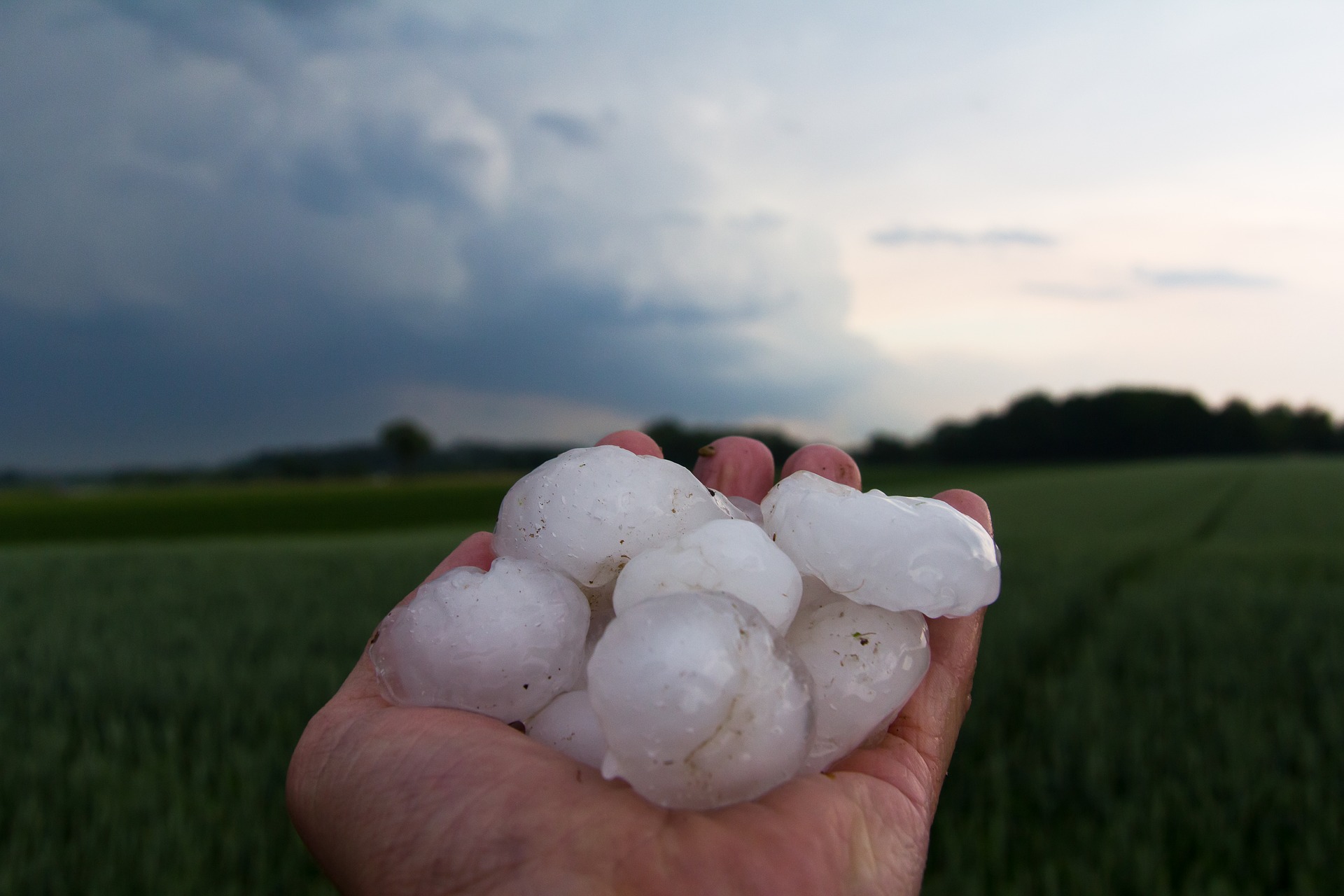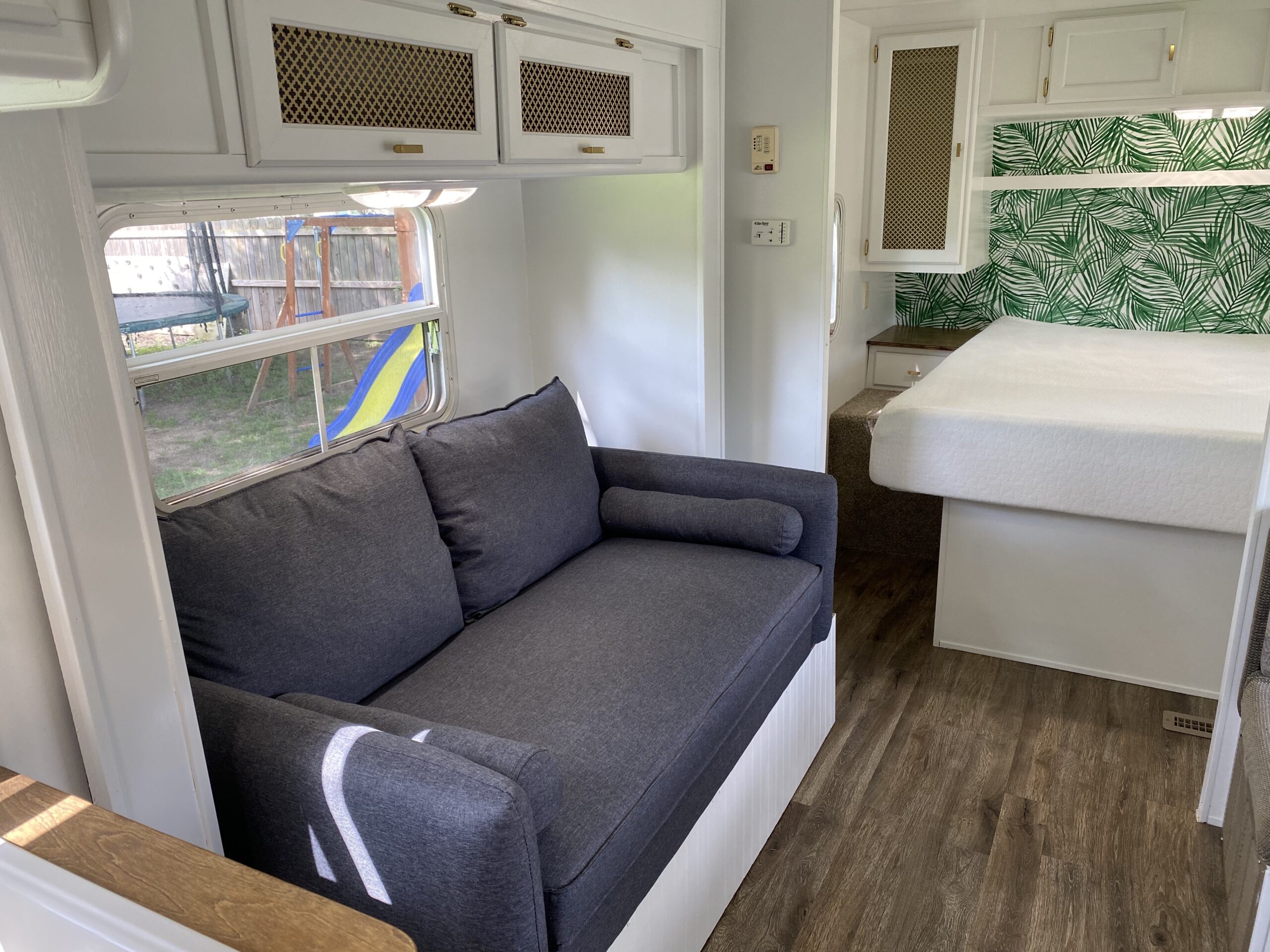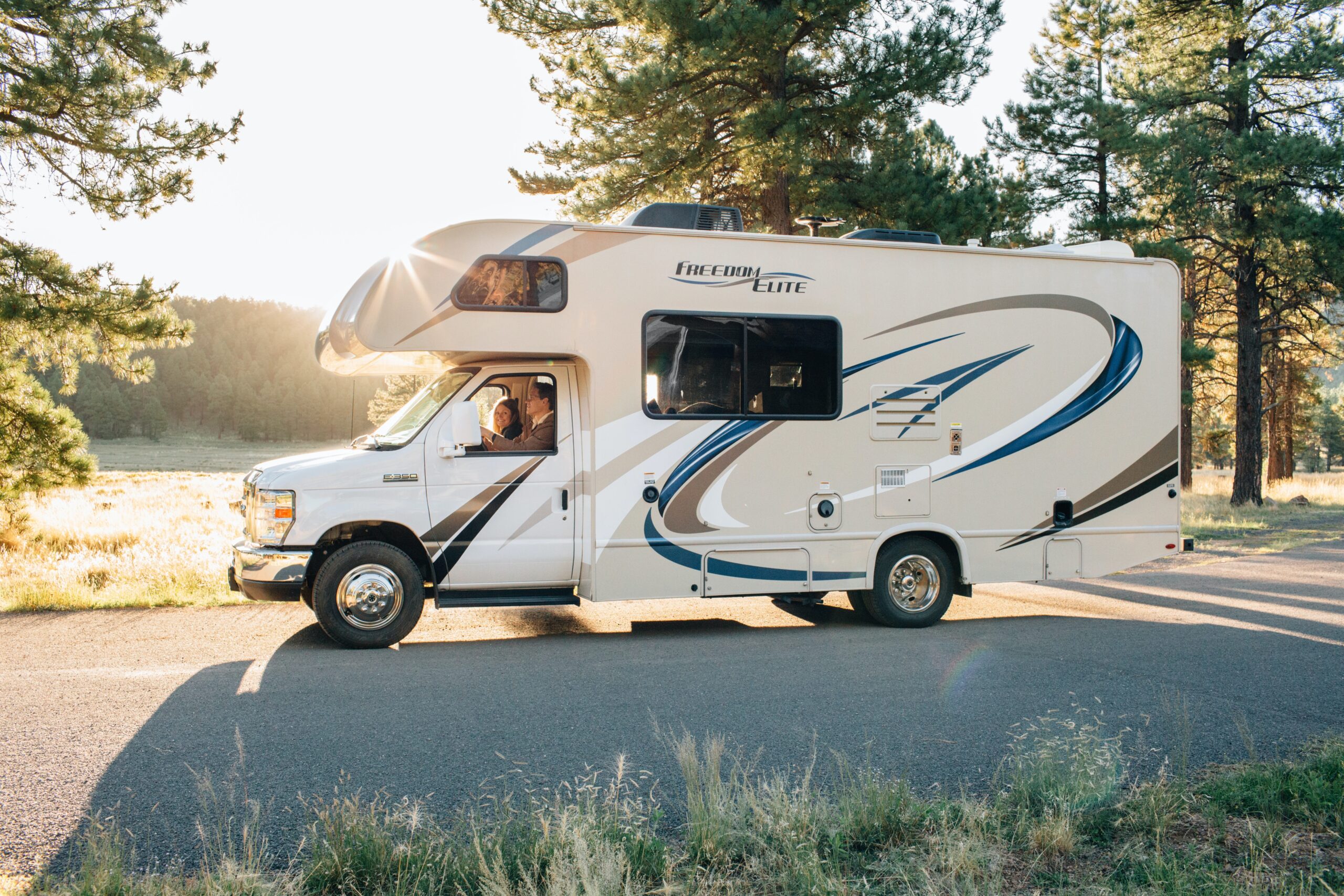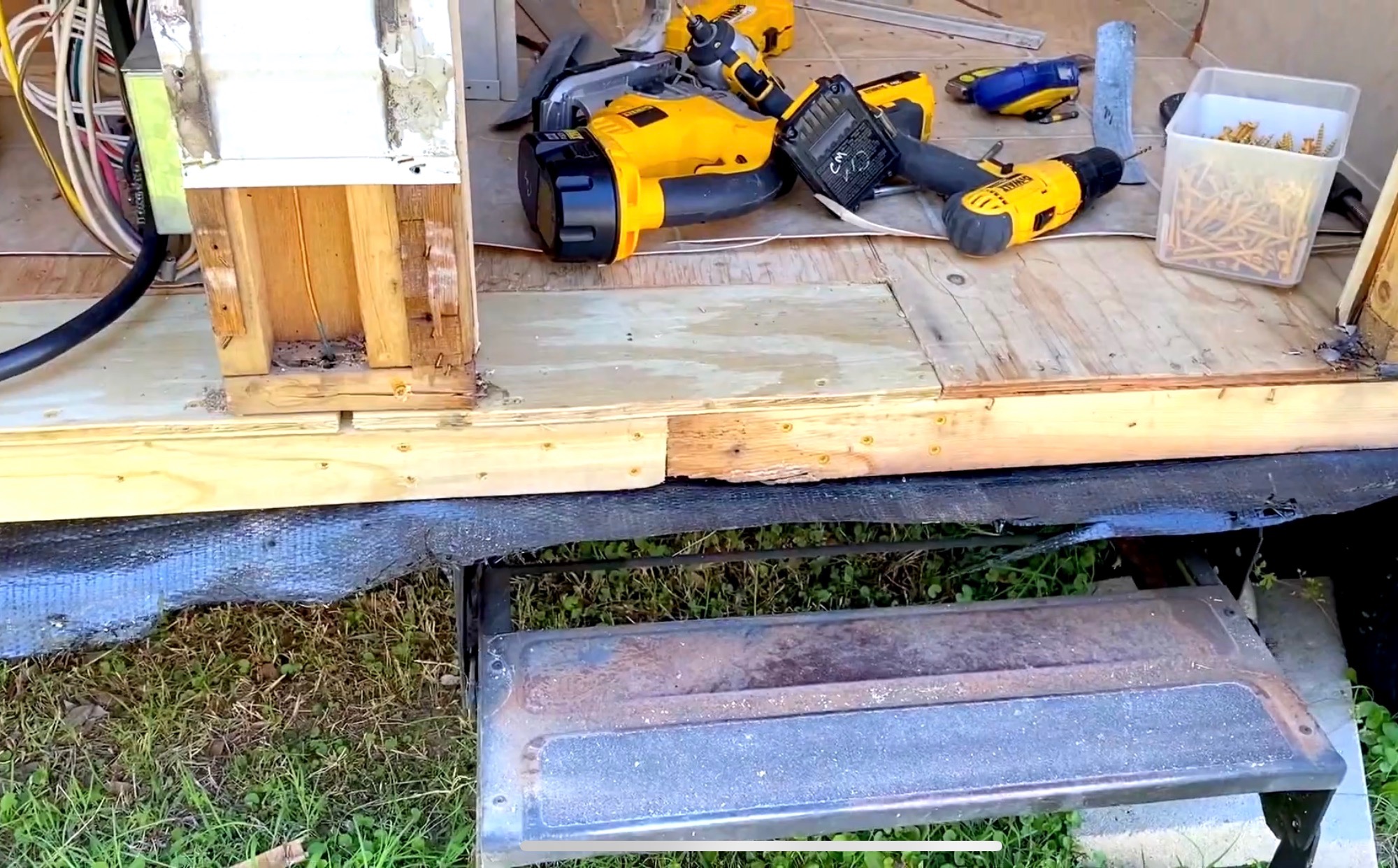We are in the middle of Spring down here in North Texas and that means severe weather. One of the elements we often deal with is large, damaging hail.
Hail damage can cause all sorts of grief. Think of everything that is exposed on your rig like the roof, vent covers, AC, awning, siding, and windows.
All of these things start to add up. Not to mention, the unknown/unseen damage that allows water to start seeping in to do its dirty work.
As I put together a strategy to protect my camper trailer’s new roof from this damaging natural phenomenon, I thought I would share what I’ve found.
While you’re at it, be sure to check out our article covering RV Weather Safety.
What is the best way to protect an RV from hail damage?

The best way to protect an RV from hail damage is to use covered parking. I know this is a no-brainer, but it’s true. Nothing adds up to this type of protection.
It doesn’t matter whether you have enclosed storage, a pole barn, or a carport, they offer the absolute best protection from hail and other natural threats like harmful sun exposure and rain.
However, what if an option like the ones mentioned above are outside of what is currently possible for you? What if you don’t have the space, the time, or the budget? Are there some cheaper and less involved solutions?
Let’s explore.
Carry insurance
What? How does insurance protect your RV? Technically it doesn’t. But what it does do is protect you from the expense of having to make all the repairs yourself.
According to Coach Specialists of Texas, the average cost to replace sheet metal on an RV is anywhere from $9.50 – $13.50 per square foot, including parts and labor. Think about those numbers for a moment. It’s quite eye-opening.
On top of that, no deduction apply to doors and windows (in terms of overall square footage) because they have to be over 40 sqft. to meet the requirements. In other words, you may as well count all those openings as metal that being replaced, because you are getting charged for it either way.
Keep in mind, this price does not include any exterior items like the AC, roof, vent covers, lights, windows, etc. Replacing the roof alone can run about $300 per linear foot. That’s one of the main reasons I chose to do it myself.
Do RV covers protect from hail?
Covers aren’t going to offer as much protection as you would hope for. You have to remember, even the heavy duty covers offer very little between your rig and the elements.
The larger the hail, the more ineffective they will be. For smaller hail, that’s on the verge of being big enough to do damage, it may prevent it. However, as the diameter increases so does the chance of a cover not working.
They may offer a little protection, but I wouldn’t count on them. But, if you are intent on buying one for other reasons and hope to get a little hail protection from it, what should you buy?
Best RV cover for hail protection
Again, don’t have high hopes for a cover that offers substantial protection. It’s simply not going to work. However, like I mentioned above, they can offer minimal protection for hail that’s borderline on doing damage.

In my opinion, and that’s all it is, the King Bird Extra Thick cover may be one of your best options. This particular cover is 4-ply, has vent openings, and offers great wind resistance. This cover also has a 2-year warranty, which is not too bad considering what it’s up against.
If you want to add a little protection underneath, you could always lay thick blankets, quilts, pool mattresses, sleeping pads, pillows, etc, between the roof of your rig and the covering.
I know it sounds silly, but folks have done well protecting their investments by utilizing these methods. Basically, let your imagination loose when you are trying to figure out what to do.
How do you protect skylights and roof vents from hail?
There are a number of things you can do to protect your skylights and roof vents, both on the commercial side and the DIY side.
A popular commercial option, that works pretty well is to install Max Air Vent Covers. These covers are typically thicker than the factory coverings and add an additional layer of protection to your rig.

As far as DIY options go, you can always place a container or enclosure of some type over the vent covers and skylights for the duration of the storm. This is, of course, if you have time. Depending on what you use, you may have to weight it down to keep it in place.
Thick material like blankets, sleeping bags, closed cell foam, etc., can also be used. Again, these items have to be secured in some fashion so they will stay in place. This is not often easy to do given the winds usually associated with severe thunderstorms.
Hit the Road
Yep, hit the road. If meteorologists are making a pretty confident prediction about the possibility or large hail, you can always hit the road.
For those who don’t want to chance it, hook up and take off. Make sure you are out of the severe weather bulls eye and spend the night away from home a night or two.
This is not the most convenient option, but getting out of the danger zone and avoiding hail altogether will definitely prevent damage. It all depends on how committed you are to protecting your rig.
This goes for tornado threats and other weather threats as well. We all know weather predictions are at best a good guess. However, there are times when the conditions almost guarantee a weather outbreak.
If this is the case, why chance it? Especially if you are on the road. Check the weather, look at your options, and relocate if it seems feasible.
Conclusion
So, to wrap up, what options do we have to protect our rigs from hail damage. Not a lot to be honest. But, there are a few things we can do.
Be sure to use covered protection when possible, carry hail insurance, use a extra-thick cover for minimal added protection, install vent covers, leverage DIY methods like blankets, sleeping bags, air mattresses, closed-cell foam, or anything else you can find.
You can also park under trees for some protection, but be aware that trees add another layer of threats to your rig. A large broken limb landing on your roof can leave just as much damage, if not more, than hail stones themselves. Keep that in mind.
You just have to find the options that work best for you and don’t be afraid to think outside the box. Best of all, don’t stress out about things outside of your control. If you’ve done your best, there’s nothing left to worry about.







3 Responses
do self inflating mattresses work as hail protection? Then only to make fast is a problem… 😉
Thinking of “hit the road”. The other night, 20% chance of rain, our 1995, new to us, motorhome was at the shop for a tune up.
Hail hit for nealy 1/2 hour, marble to baseball sized, rained for hours.
Every exterior running light, every skylight, broken, interior soaked w rain. Shop owner says expect it to be totaled.
I’d been researching covers and how to make them better, but it wouldn’t have had a cover on at the shop if we had one.
Insurance inspectors are swamped, so won’t know for awhile. But, possible double coverage since it was in the shop’s yard .
So frustrating!
Might want to look at the hail protector cover